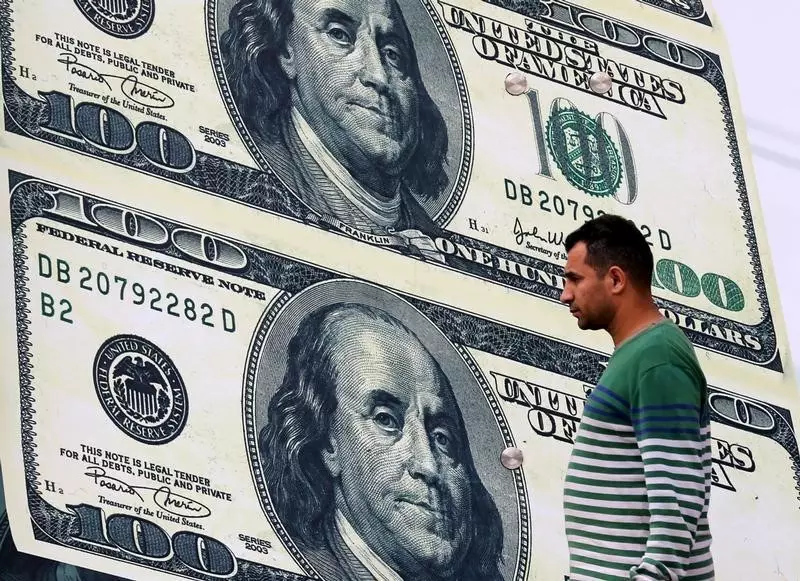The U.S. dollar found its footing on Thursday, stabilizing after experiencing losses in the preceding session prompted by mild inflation figures. This recuperation was marked by the Dollar Index rising slightly to 108.950, which brought to an end a three-day streak of declining value. Such fluctuations in currency values underscore the delicate balance that financial markets maintain in response to economic indicators. An uptick in the dollar follows the release of a Consumer Price Index (CPI) report that revealed a less-than-expected increase in inflation, adding more complexity to the landscape for investors and policymakers alike.
U.S. inflation data is a crucial barometer for the Federal Reserve’s monetary policy decisions. Despite a seemingly positive CPI report, analysts from ING expressed skepticism regarding the Fed’s capacity to lower interest rates this year. The persistent inflation rate, hovering around the 3% mark year-on-year, could hinder any attempts to ease monetary policy significantly. The speculation that only 36 basis points (bp) of easing might be anticipated in 2025 highlights the cautious approach investors are adopting towards long-term expectations.
Furthermore, the backdrop of Donald Trump’s anticipated inauguration also plays a critical role. His administration’s plans to impose stringent tariffs across the globe raise concerns about inflationary pressures, thereby complicating the dollar’s trajectory. The upcoming sessions will also feature retail sales data, but much of the attention in forex markets seems poised to be on Scott Bessent, Trump’s nominee for Treasury Secretary. His confirmation hearing will likely further illuminate his stance on the dollar and fiscal strategies, elements of significant interest for market players.
In sharp contrast, the British pound stumbled against the dollar, trading down 0.3% to 1.2199 after disappointing growth figures were unveiled. November’s GDP data showed that the British economy managed a meager 0.1% increase, falling short of the 0.2% expansion that analysts had predicted. This lackluster performance, marking the first uptick since August, highlights a broader economic malaise that the Bank of England may need to address in the immediate future. Market analysts are increasingly predicting a potential rate cut in February, reflecting growing concerns regarding economic stagnation.
The possibility of further rate cuts—predictions of two reductions in 2025 already factored into market expectations—paints a concerning picture for the pound. The combination of lackluster growth and the looming threat of monetary easing puts the currency under additional pressure, suggesting that without a robust economic recovery, the pound may continue to struggle against the greenback.
Turning to the euro, EUR/USD also experienced a slight dip, falling to 1.0290. European inflation data reflected subdued price levels, aligning with broader trends observed across the region. A missed opportunity for the euro to gain substantially against the dollar following the U.S. CPI report suggests a lack of confidence in Europe’s capacity to recover. ING pointed out that the underperformance might be indicative of a prevailing sentiment that the eurozone is grappling with weak growth and perceived lack of effective leadership.
The European Central Bank (ECB) is increasingly expected to adopt a more dovish stance, with projections indicating a possible 100 bp cut in interest rates by 2025. Such measures, if realized, would compound the euro’s difficulties against stronger currencies, particularly as the Federal Reserve’s easing remains relatively conservative.
The Asian Market Context
In Asia, the USD/JPY pair reflected market dynamics as well, with the dollar losing 0.4% to 155.75—its lowest point since mid-December. The yen’s upward trajectory follows comments from Bank of Japan (BOJ) Governor Kazuo Ueda, indicating a readiness to reconsider interest rate policies. This anticipated shift may signify a departure from the ultra-low interest rate environment that has characterized Japan’s economy for years.
Additionally, the USD/CNY remained steady at 7.3317, lingering around a 16-month high, while attention shifts toward the release of critical GDP data expected on Friday.
Overall, the current currency market dynamics are influenced by a broad spectrum of economic indicators and geopolitical factors, highlighting the interconnectedness of global finance. Traders and investors remain alert to shifts that might indicate long-term trends, underlining the rising complexity of navigating currency investments in these uncertain times.

